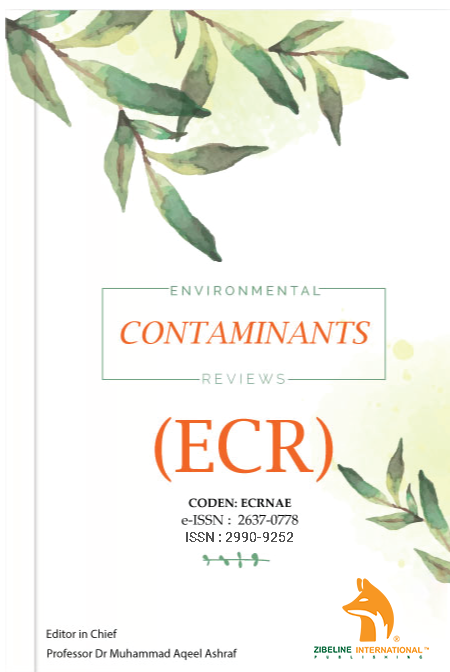
APPLICATION OF INDUCED POLARIZATION IMAGING FOR SPATIAL MAPPING OF LEACHATE PLUME IN A MUNICIPAL WASTE DUMPSITE IN KANO, NIGERIA
Journal: Environmental Contaminants Reviews (ECR)
Author: Abdulkadir, A.,Jibril, F.M., Salisu M.
This is an open access article distributed under the Creative Commons Attribution License CC BY 4.0, which permits unrestricted use, distribution, and reproduction in any medium, provided the original work is properly cited
Doi:10.26480/ecr.02.2025.42.45
ABSTRACT
This study investigates the Application of Induced Polarization Imaging for Spatial Mapping of Leachate Plume in a Municipal Waste Dumpsite in Kano, Nigeria, using 2D Induced Polarization (IP) imaging and physicochemical groundwater analysis. The primary objective is to assess subsurface contamination and its impact on groundwater quality. The research employs two-dimensional geoelectrical imaging to map subsurface resistivity variations and identify buried waste materials. Groundwater samples were collected from five boreholes along the study profiles and analyzed for pH, electrical conductivity (EC), and heavy metal concentrations, including lead (Pb), cadmium (Cd), copper (Cu), and zinc (Zn). The IP results reveal high chargeability anomalies indicative of buried waste, particularly at depths of up to 17 meters. The chargeability values correlate with areas of significant contamination, suggesting extensive leachate migration. The physicochemical analysis of groundwater samples indicates variations in water quality across the study area. The pH values range from 6.07 to 7.01, within acceptable drinking water limits. However, EC values exceed the permissible threshold, indicating high dissolved ion content. Heavy metal analysis reveals Pb and Cd concentrations above World Health Organization (WHO) and Nigerian Standard for Drinking Water Quality (NSDQW) limits, suggesting contamination from landfill leachates. Elevated Cu and Zn levels, particularly at the dumpsite, further confirm anthropogenic pollution, likely from the burning and dismantling of electronic waste. The findings highlight the necessity for continuous environmental monitoring and the implementation of containment measures to mitigate leachate migration.
KEYWORDS
Induced Polarization, Chargeability, Landfill, Leachate, Contamination.

